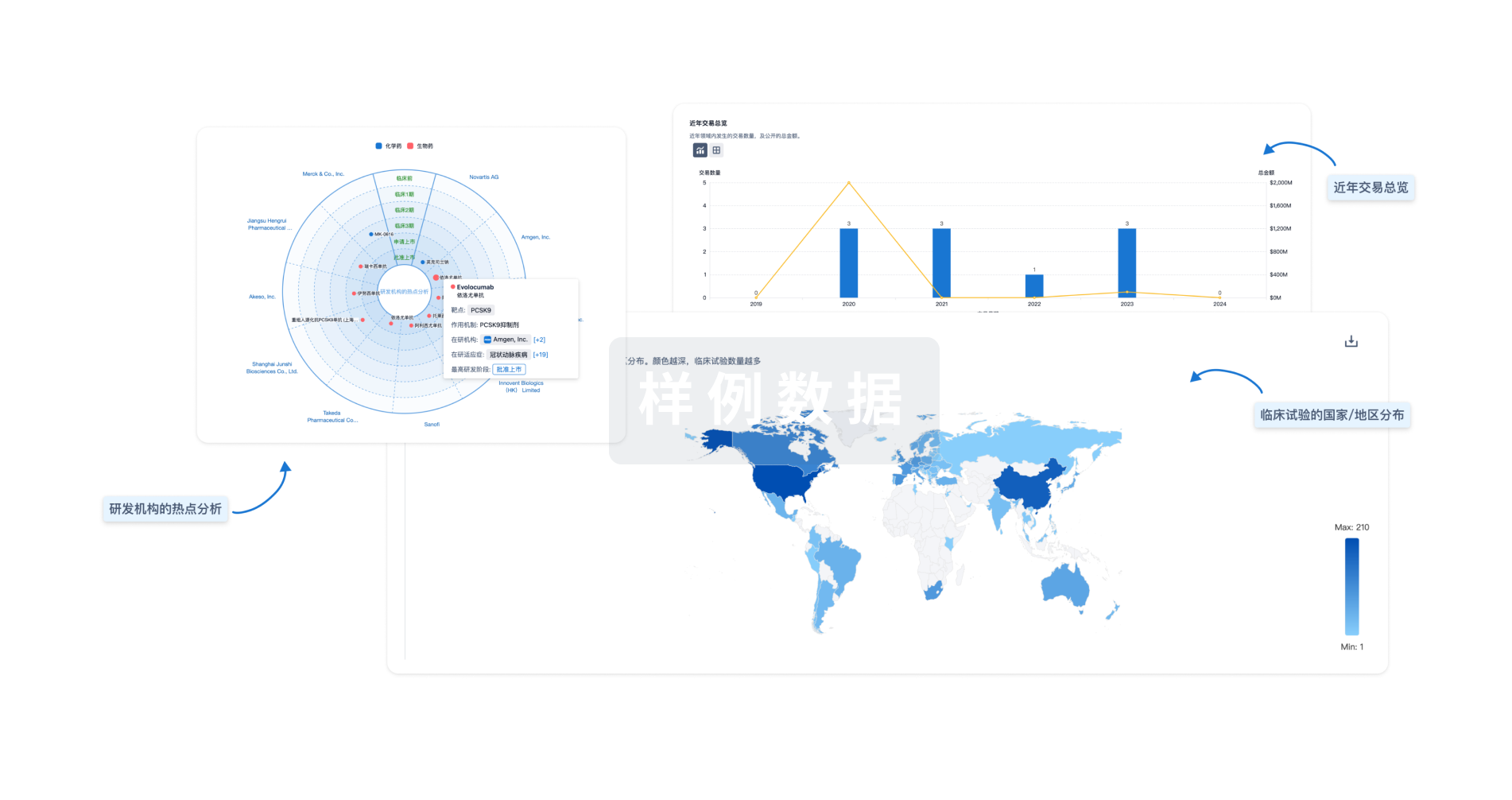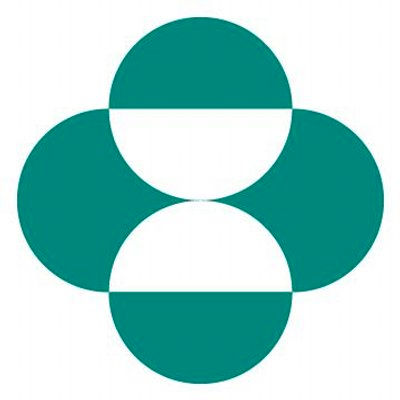预约演示
更新于:2025-05-07
Class I PI3K x MEK
更新于:2025-05-07
基本信息
相关靶点 |
关联
3
项与 Class I PI3K x MEK 相关的药物作用机制 MEK1抑制剂 [+4] |
在研适应症 |
非在研适应症 |
最高研发阶段临床1/2期 |
首次获批国家/地区- |
首次获批日期1800-01-20 |
作用机制 MEK1抑制剂 [+1] |
在研适应症 |
非在研适应症- |
最高研发阶段临床前 |
首次获批国家/地区- |
首次获批日期1800-01-20 |
作用机制 Class I PI3K抑制剂 [+1] |
在研机构- |
在研适应症- |
非在研适应症 |
最高研发阶段无进展 |
首次获批国家/地区- |
首次获批日期1800-01-20 |
100 项与 Class I PI3K x MEK 相关的临床结果
登录后查看更多信息
100 项与 Class I PI3K x MEK 相关的转化医学
登录后查看更多信息
0 项与 Class I PI3K x MEK 相关的专利(医药)
登录后查看更多信息
491
项与 Class I PI3K x MEK 相关的文献(医药)2025-12-01·Clinical Proteomics
Integrating functional proteomics and next generation sequencing reveals potential therapeutic targets for Taiwanese breast cancer
Article
作者: Liao, Chen-Chung ; Kong, Po-Hsin ; Tseng, Ling-Ming ; Huang, Yen-Chun ; Chen-Chan, Hsieh ; Huang, Chi-Cheng ; Huang, Chi-Jung ; Liu, Chih-Yi ; Ku, Wei-Chi
2025-12-01·Molecular Biology Reports
Role of signaling pathways in endometrial cancer
Review
作者: Yadav, Ritu ; Chauhan, Meenakshi B ; Balhara, Nikita
2025-04-01·ESMO Open
Comprehensive genomic profiling by liquid biopsy portrays metastatic colorectal cancer mutational landscape to predict antitumor efficacy of FOLFIRI plus cetuximab in the CAPRI-2 GOIM trial
Article
作者: Vallarelli, S ; Zaniboni, A ; Lonardi, S ; Pietrantonio, F ; Di Maio, M ; Latiano, T P ; Normanno, N ; Tagliaferri, P ; Toma, I ; De Stefano, A ; Troiani, T ; Brunetti, O ; Ciardiello, D ; Avallone, A ; Maiello, E ; Curigliano, G ; Fazio, N ; Martini, G ; Russo, A E ; Lucenti, A ; Cinieri, S ; Bordonaro, R ; Berardi, R ; Napolitano, S ; Paoletti, G ; Cioli, E ; De Vita, F ; Tortora, G ; Rosati, G ; Martinelli, E ; Scartozzi, M ; Febbraro, A ; Tamburini, E ; Bielo, L B ; Ciardiello, F ; Nisi, C ; Parente, P ; Zampino, M G ; Lotesoriere, C ; Cremolini, C ; Pisconti, S ; Iacono, D
56
项与 Class I PI3K x MEK 相关的新闻(医药)2025-04-22
·癌度
癌度医学临床招募资讯微信群(点击)对于结直肠癌来说,确诊之后的基因检测一般主要是KRAS、BRAF和PIK3CA基因突变,如果是这些基因发生了激活突变,那么结直肠癌的一线标准治疗就放弃了EGFR抗体药物西妥昔单抗或帕尼单抗,而是选择抗血管生成靶向药贝伐单抗联合化疗。这种治疗的安排原理是如果下游基因发生了激活突变,在上游信号通路用药是无意义的。EGFR基因的信号通路上面的图示可以比较清楚地看到了EGFR基因的信号通路了,大家比较常见的一些药物其实就是对信号通路的一个基因进行阻断。这里癌度给大家举一个例子,BRAF基因V600E突变的肺癌患者常用两个靶点的药物:第一个是针对BRAF基因本身的达拉非尼,第二个是针对MEK基因的曲美替尼,这两个靶向药可以联合使用的关键在于MEK基因在BRAF基因下游。其实不管上面的两个靶向药换成是什么,针对的基因都是一样的,那就是针对驱动基因的下游去阻断。今天癌度给大家介绍一个临床试验,与上面的癌症发生信号通路的阻断不一样,选择KRAS基因G12C突变的结直肠癌患者,使用靶向KRAS基因本身Sotorasib(索托拉西布,AMG510),与EGFR靶向药帕尼单抗联合使用,我们对照上面的图片可以看出EGFR基因在KRAS基因上游,既然KRAS基因突变驱动了肿瘤的发生,那么阻断EGFR基因的管用吗?我们一起看看这个研究结果,这个研究发布在最近的国际学术期刊。本文参考文献刊例示意图1、上下起手打击癌细胞基因突变,总生存期差距不大这是一个三期临床试验,索托拉西布的使用剂量分为两组,一组患者使用了960毫克的索托拉西布,另外一组患者使用了240毫克的索托拉西布,这两组使用索托拉西布的患者联合使用EGFR抗体药物帕尼单抗,对照组的患者将会被医生安排使用临床上标准治疗方案:曲氟尿苷/替吡嘧啶或瑞戈非尼。在之前的数据报道里,960毫克的索托拉西布联合帕尼单抗显著延长了KRAS基因G12C突变肠癌的无进展生存期,对照组的中位无进展生存期是2个月,而960毫克索托拉西布联合帕尼单抗的中位无进展生存期是5.6个月。最近刚刚披露的是次要终点总生存期数据。索托拉西布联合帕尼单抗治疗KRAS基因G12C肠癌总生存期这个研究招募了160名患者用药治疗,按照等比例分为了三组。中位随访时间为13.6个月,960毫克索托拉西布、240毫克索托拉西布和对照组的治疗应答率分别是:30.2%、7.5%和1.9%。中位治疗持续时间分别为:6个月、4.6个月和2.2个月。但是中位总生存时间没有显著差异,这个我们可以在上面的图片看出,上面图片的蓝绿色曲线是960毫克索托拉西布和标准治疗对比,红蓝色曲线是960毫克索托拉西布和标准治疗对比,没什么明显的拉开,很多都重合在了一起。也就是说总生存期数据差距是不显著的。2、这个研究失败了吗?如果按照中位无进展生存时间来对比,960毫克索托拉西布和帕尼单抗治疗是显著比临床标准治疗要好,治疗应答率也是差距了几十倍,一个是30.2%的患者客观缓解,对照组只有1.9%的患者客观缓解(缓解是指可评估肿瘤病灶缩小超过30%)。所以如果从这两个疗效数据来说,这个临床试验是成功的,对于KRAS基因G12C突变的肠癌患者来说,960毫克索拖拉西布联合帕尼单抗是一个比标准治疗更好的选择。这个研究的次要终点是中位总生存时间,这个癌度在上面给大家分析了是没有显著差别。最后这个治疗方案提交申请上市估计要看以什么做参考。以中位无进展生存期和治疗应答率做依据是可能被批准的。所以也不能说上面的治疗方案是失败的。这里我们重新回到本文开头的那个图表,如果让作者本人设计临床试验,则不大可能使用将KRAS基因靶向药和上游EGFR药物组合,来治疗KRAS基因突变的恶性肿瘤,但是这个临床试验的研究者可能更有其严谨的逻辑或体外研究数据,还是应了癌度给很多病友介绍的临床试验这么花钱,那么就可以肯定一点制药公司对治疗方案应该有信心,哪怕是我们自己理解不到或感觉有点错误,但是敢于全球开展临床试验招募数百名癌症患者免费使用药物,那么这个临床试验治疗方案应该有一定治疗潜力。最后说一句,不管对于KRAS基因G12C突变肠癌患者,960毫克索托拉西布和帕尼单抗治疗方案能不能获批,这个临床试验仍然不能算是失败的,至少几百名癌症患者参加临床试验而免费用药和免费检查,因此也是值得大家尊敬的。欢迎大家关注联系癌度,申请最近的肿瘤临床试验获取免费用药方案。参考文献:Filippo Pietrantonio, MD, et al., Overall Survival Analysis of the Phase III CodeBreaK 300 Study of Sotorasib Plus Panitumumab Versus Investigator’s Choice in Chemorefractory KRAS G12C Colorectal Cancer, J Clin Oncol 2025. 往期推荐 下一代TIL疗法的标准?CD40L增强型TIL有望提升1倍癌症治疗效率,缩短一半生产时间!厉害了!专治骨转移癌痛的新药SSS40,缓解恼人的癌痛,改善肿瘤患者生活质量!肺癌已经治愈了为何还是会复发?ctDNA检测患者体内微小残留病灶,但采血时机很重要!“里程碑式”乳腺癌药物卡帕塞替尼获批,减缓无法治愈的乳腺癌扩散!
临床3期临床结果临床失败
2025-04-09
The round pushes Caris’ total haul to $1.86 billion raised since 2018. \n Caris Life Sciences has collected $168 million in new funding to support the growth of its precision medicine platforms, following the FDA’s approval of its multi-cancer companion diagnostic test last fall.The financing was led by returning investor Braidwell, with additional backing from Perceptive Advisors, Woodline, Ghisallo, Millennium Management and First Light Asset Management, among others. The round pushes Caris’ total haul to $1.86 billion raised since 2018. “We are pleased to continue our relationship with Caris, and we believe Caris is well-positioned as a precision medicine leader in this dynamic sector,” Braidwell Partner Narendra Nayak said in a statement. “Caris has continued to advance its position among physicians, patients and biopharma partners as a trusted provider, molecular science leader and innovator.”The company’s MI Cancer Seek assay, greenlit by the FDA in November, examines 228 genes for single nucleotide variants plus insertions and deletions, as well as the cancer’s microsatellite instability status and tumor mutational burden, using both whole exome and whole transcriptome sequencing.This allows it to be used to find eligible patients for targeted treatments, such as Novartis’ Piqray (alpelisib) in breast cancers carrying a PIK3CA mutation; Amgen’s Vectibix (panitumumab) in wild-type KRAS and NRAS colorectal cancer; and a combination regimen for BRAF V600E-positive colorectal cancer with Pfizer’s Braftovi (encorafenib) and Eli Lilly’s Erbitux (cetuximab).It also covers Novartis’ Mekinist (trametinib) in melanoma, as well as other BRAF inhibitors and BRAF/MEK combination therapies for the skin cancer. Finally, in non-small cell lung cancer with specific EGFR mutations, MI Cancer Seek can be paired with tyrosine kinase inhibitors. Last year, the company also launched the Caris Assure plasma blood test for cancer therapy selection, which traces back genetic mutations to their origin. Caris has said that, without the proper investigation of certain variants, oncologists may prescribe treatments based on mutations that do not, in fact, come from the tumor.“This raise will help us bring our market-leading science and technologies to as many patients as possible and further our goal of revolutionizing precision medicine,” said Caris founder and CEO David Halbert. “We plan to unlock the full potential of precision medicine by comprehensively interrogating cancer at the molecular level and enabling the delivery of transformative applications of molecular science.”

2025-02-16
·精准药物
导语
RAS基因突变是人类肿瘤中最普遍且著名的基因突变,作为EGFR的下游效应物,RAS蛋白能够与多种下游信号通路关联,如MAPK和PI3K通路,以促进肿瘤的发生。在与肿瘤发生相关的三种RAS亚型中,KRAS最常发生突变。而其中12号密码子的点突变占比高达80%。
尽管在几十年的研发中并未出现获批的KRAS靶向药物,最近,通过共价变构抑制剂靶向KRAS表面口袋的研究为新的药物研发提供了希望,特别是针对KRASG12C突变。这些抑制剂,例如AMG510和MRTX849,在早期研究中都表现良好。
本文于2021年发表于《Annual Review of Medicine》,概述了KRAS的分子结构、临床病理意义以及针对KRAS的早期临床前和临床方法,并讨论了KRAS相关药物的耐药机制,为新的药物研发以及抗肿瘤治疗提供了思路与方向。
引言
RAS是一种小GTP酶,能够将细胞外信号转导至驱动细胞生长、分化、凋亡的效应蛋白,是细胞内的分子开关。RAS突变会导致10种以上的细胞内信号级联的永久打开,尤其是MAPK/ERK和PI3K通路(图1)。
图1 KRASG12C突变癌细胞对MAPK通路(RAF/MEK/ERK)的内在依赖性
RAS家族有三种主要的同种型,KRAS、HRAS和NRAS,其中KRAS是最常发生突变的,占所有癌症的85%,胰腺导管腺癌(PDAC)的90%,结直肠癌(CRC)的43%,肺腺癌的25-30%,非小细胞肺癌(NSCLC)的30%-35%,也会在子宫内膜癌、膀胱癌等癌症中出现。KRAS的12号密码子点突变占KRAS突变的恶性肿瘤的80%,其中41%是G12D( GGT到GAT突变,用天冬氨酸取代甘氨酸),28%是G12V( GGT到GTT突变,用缬氨酸取代甘氨酸),14%是G12C( GGT到TGT突变,用半胱氨酸取代甘氨酸)。三分之二的PDAC和一半的CRC中存在KRASG12D突变,90%的胰腺癌患者携带KRASG12D和KRASG12V。KRASG12C是NSCLC中最普遍的KRAS突变,在肺腺癌中占13%,CRC中占3%,在其它癌症中也部分存在。
KRAS在癌症中分布广泛,是肿瘤的重要治疗靶点,但由于KRAS蛋白分子较小,与GTP具有高亲和力且缺乏理想的结合“口袋”,研发特异性结合KRAS的分子十分困难。尽管经过几十年的研究,市场上仍未有临床批准的KRAS靶向药物。现在,一个革命性的研究策略,通过共价变构抑制剂靶向KRAS表面的“口袋”,为药物研究带来了希望。
KRAS的分子结构
KRAS由6条β链和5个α螺旋组成,分为两个结构域:G结构域和C末端结构域。作为分子开关,KRAS通过与GTP或者GDP结合,在无活性和活性状态之间转换。负责GDP-GTP转换的开关 I和开关II元件能够与效应物如CRAF、PI3K和RALGDS相互作用,并且是鸟嘌呤核苷酸交换因子SOS1和SOS2的变构因子。与KRAS G12D不存在适合的治疗干预靶点不同,KRASG12C中的半胱氨酸可能通过表面口袋、附近的核苷酸结合位点或开关元件等方式将RAS固定在无活性的GDP结合状态中,因此成为了药物研发的焦点。Shokat等人研究发现了与KRASG12C在GDP结合状态下共价结合的小分子,命名为ARS-1620,是KRASG12C选择性抑制剂。
KRAS突变的临床病理意义
在结直肠癌中,KRAS突变会导致不良预后,并且会导致EGFR单抗耐药。KRAS突变的肺癌在白人和吸烟者中更为常见,并具有明显的临床病理特征。在非小细胞肺癌中,早期研究发现KRAS突变与早期复发和生存率低相关,但在最近的研究中未发现相同结果。在肺癌中,KRAS突变与其他驱动基因突变的发生相互排斥。然而,通过下一代测序或荧光原位杂交技术,研究发现1078名具有KRAS突变的非小细胞肺癌患者中,超过一半(53.5%)携带另一种突变。其中,KRASG12C倾向于与ERBB2和ERBB4突变共同发生,而KRASG12D和KRASG12V经常与PDGFRA和PTEN共突变。在许多KRAS突变的肿瘤类型中,TP53和CDKN2A是最常见的共存突变,而在肺腺癌中,STK11和KEAP1的突变最为常见。在结直肠癌中,最常见的共存突变位点是PIk3CA。KRAS突变也可以和不常见但可靶向的突变共存,包括EGFR和BRAF。
靶向KRAS的早期临床前和临床研究
1. 靶向KRAS上游调节因子
此前,针对KRAS上游调节因子的治疗曾是研究热点(图1)。例如,KRAS定位到细胞膜上需要法尼基转移酶的帮助。此外,还需要C端加工酶,例如Rce1和ICMT来增加C端尾部的疏水性以及RAS膜定位。因此,FGTI-2734、FTI-277 及其他法尼基转移酶抑制剂在广泛研究中显示出一定活性,但临床转化效果不佳。抑制Rce1和ICMT的药物(UCM-1336、cysmethynil)也进行了类似研究,但脱靶导致的毒性以及这些酶缺失后的影响阻碍了其临床应用。还有少数分子被开发用于抑制SOS1,从而阻止GDP与GTP的交换,进而下调RAS信号传导。勃林格殷格翰公司研发的一种名为BI1701963的药物,是一种口服KRAS抑制剂,能够诱导癌细胞衰老。
2. 抑制MAPK (RAF-MEK-ERK) 通路
鉴于靶向KRAS上游调节因子的药物存在毒性和疗效不佳的问题,下游效应因子,尤其是RAF-MEK-ERK和Akt-mTOR信号通路中的效应因子,已成为更受欢迎的治疗靶点(图2)。RAF-MEK-ERK通路,也称为MAPK通路,是由一系列丝氨酸/苏氨酸选择性蛋白激酶(RAF、MEK和ERK)组成的细胞内信号级联反应。在缺乏临床有效的RAS特异性抑制剂的情况下,抑制下游的MEK或ERK可能降低KRAS依赖性肿瘤的发生。肺癌小鼠模型表明,KRASG12C比KRASG12D对MEK的抑制剂司美替尼更敏感,并且MEK抑制可增强化疗对KRASG12C肿瘤的疗效。值得注意的是,同时发生的p53突变消除了KRASG12C肿瘤对这种联合疗法的反应。
图2 克服接受了KRASG12C选择性抑制剂治疗的KRASG12C突变癌细胞产生耐药性的策略
然而,作为单一药物,MEK抑制剂的临床作用微乎其微,这促使人们进一步研究耐药机制。研究发现,KRAS二聚化在生物学和治疗中都至关重要,可能在观察到的耐药性中发挥了一定作用。在KRAS突变肿瘤中,破坏RAF-MEK复合物是抑制ERK信号传导所必需的。在非小细胞肺癌的治疗研究中,司美替尼与多西他赛联合使用和单独使用多西他赛的疗效并无太大差异。因此,基于多种MEK抑制剂的联合疗法如今越来越受欢迎,这些临床试验的结果也备受期待。相比之下,单独使用口服MEK抑制剂曲美替尼对KRAS突变肿瘤效果不佳,尽管它已获批用于BRAF突变的转移性黑色素瘤。
3. 抑制PI3K (PI3K-AKT-mTOR) 通路
PI3K通路是RAS下游另一个重要信号级联,它能够调节细胞周期进程,阻止细胞凋亡,从而导致细胞存活、增殖和侵袭。独特的是,PI3K突变在KRAS突变肿瘤中频繁出现,而反过来,KRAS突变肿瘤对PI3K抑制剂产生耐药性。此外,PI3K信号在暴露于MAPK抑制剂的肿瘤细胞中增强。研究发现在肺癌动物模型中PI3K和MEK抑制剂具有协同活性。同样,在非小细胞肺癌患者来源的异种移植模型中,PI3K抑制剂可防止对ARS-1620(一种KRASG12C共价抑制剂)的耐药性,但仍需进一步的临床验证。由于耐药机制以及主要通路间的相互关联导致许多治疗方法取得的临床价值有限。
4. 抑制 SHP2
SHP2通过SOS1将受体酪氨酸激酶信号传导到RAF-MEK-ERK通路。它由PTPN11编码,包含两个SH2结构域,一个PTP催化结构域和一个C末端基序。尽管作为单一药物,SHP2抑制剂对携带KRAS或BRAF突变的癌细胞系活性有限,但研究证明SHP2失活可以恢复KRAS突变型非小细胞肺癌对MEK抑制的敏感性,并诱导衰老,抑制KRAS突变型肿瘤患者来源的异种移植瘤的生长。因此,多种口服的SHP2抑制剂,如TNO155,RLY-1971和JAB-3068,均处于早期、首次人体临床试验阶段(图2)。MRTX849与TNO155联合用药的试验也在进行中。
5. 靶向KRAS突变肿瘤的“合成致死”策略
合成致死的概念是指在特定突变癌基因存在的情况下,抑制某一特定靶点可诱导细胞死亡,这一概念引发了广泛的研究热潮,包括在对抗KRAS突变肿瘤的研究中。
随着技术的发展,特别是CRISPR/Cas9基因组编辑技术,使得在KRAS突变肿瘤中进行合成致死筛选成为可能,并且由此发现了一些作用于多个靶点的组合策略,这些靶点包括CDK4/6、SHP2、MEK、BCL-XL和BCL2等。我们注意到,针对这些靶点的抑制剂作为单一药物活性有限,因此确定最佳组合方案已成为当前研究的主要焦点。
一项研究使用navitoclax和曲美替尼同时抑制BCL-XL和MEK,用于治疗具有KRAS突变的实体瘤;结果显示疾病控制率达46.2%,部分缓解率为15.4%,但约40%的患者出现了3-4级治疗相关不良事件,主要表现为天冬氨酸转氨酶升高、腹泻和血小板减少。
此外,CDK4/6抑制剂也被用于实现KRAS突变肿瘤的合成致死,在随机III期JUNIPER试验中,对比了阿贝西利和厄洛替尼在接受过治疗的KRAS突变型非小细胞肺癌患者中的疗效。结果显示阿贝西利的无进展生存期为3.6个月,厄洛替尼为1.9个月;客观缓解率分别为8.9%和2.7%,但二者均未对总生存期产生显著影响。
尽管使用了各种抑制剂进行了大量尝试,但临床疗效仍相对有限,开发能够带来真正临床获益的特异性RAS抑制剂仍是该领域的目标。
6. KRASG12C特异性共价抑制剂的临床研究进展
KRAS蛋白结构的研究进展发现,KRASG12C存在可被靶向的开关II口袋,使得药物研发工作聚焦在特异性共价结合KRASG12C的小分子化合物上。首个进入临床的新型共价抑制剂是AMG 510,同时也有更多的抑制剂不断涌现(图2)。
6.1. AMG 510
AMG 510是由安进公司开发的一种新型小分子药物,它通过与获得性半胱氨酸(以及核苷酸结合口袋)附近的隐匿口袋结合,特异且不可逆地抑制KRASG12C,将突变酶锁定在无活性的GDP结合状态。与另一种KRASG12C抑制剂ARS-1620相比,AMG 510在体内活性高出十倍,因为它还能与His95周围的沟槽结合。
2019年,AMG 510的首批人体临床数据在美国临床肿瘤学会上和欧洲肿瘤学会上先后公布(表1)。该研究包括剂量递增和剂量扩展两个阶段,在剂量递增阶段,剂量组为180至960毫克,在960毫克/天剂量组进行了剂量扩展。在剂量递增阶段,23名非小细胞肺癌患者中有11名部分缓解,11名病情稳定;29名结直肠癌患者中有1名部分缓解,22名病情稳定。对应非小细胞肺癌患者的客观缓解率为48%,疾病控制率为96%;结直肠癌患者的客观缓解率较低,仅为3%,但79%的患者病情得到控制。
表1 正在开展的KRASG12C共价特异性抑制剂临床试验
在剂量扩展队列中,13名非小细胞肺癌患者有反应,对应客观缓解率和疾病控制率分别为54%和100%(54%部分缓解,46%病情稳定);结直肠癌患者的客观缓解率和疾病控制率分别为8%和92%(8%部分缓解和83%疾病稳定)。总体而言,非小细胞肺癌的疗效要显著优于结直肠癌。
AMG 510耐受性良好,34.2%的患者仅报告了1-2级治疗相关不良事件。未报告剂量限制性毒性、严重或致命的治疗相关不良事件以及因治疗相关不良事件而停止治疗的情况。最常见的毒性反应为腹泻、恶心和贫血。缓解持续时间较短,大约2至6个月后出现耐药性。尽管尚未确定既能增强又能维持疗效的最佳联合治疗方案,KRAS现在已被认为是可以成药的。
6.2 MRTX849
MRTX849是由Mirati Therapeutics公司研发的另一种KRASG12C抑制剂,它通过与获得性半胱氨酸共价结合,不可逆地占据开关II裂隙。有趣的是,在临床前模型中,通常会带来耐药性的共突变,包括TP53、STK11和KEAP1突变,并不影响对MRTX849的反应。在EORTC-NCI-AACR年度研讨会上公布了I/II期研究的结果(表1)。研究测试了150至1200毫克的每日剂量,剂量扩展是在600毫克,每日两次进行的。17名接受治疗的患者中有12名可评估,其中6名患有非小细胞肺癌,4名患有结直肠癌,2名患有阑尾癌。在600毫克,每日两次的剂量下,1名结直肠癌患者和3名非小细胞肺癌患者有部分缓解,而其他所有患者均病情稳定。MRTX849耐受性良好,主要为1级不良事件,最常见的为腹泻和恶心。罕见的3级或更高级别不良事件包括疲劳和食欲下降。因此,KRASG12C特异性共价抑制剂已成为潜在治疗方案。
6.3 ARS3248、LY3499446及其他处于临床开发阶段的KRASG12C抑制剂
尽管作为首个KRASG12C抑制剂的ARS-1620效力不足,临床活性有限,但该分子作为研究适应性和耐药机制的工具发挥了作用,为组合治疗策略的开发提供了指导。ARS3248是Wellspring Biosciences和Janssen开发的ARS-1620的显著改进版,于2019年年中进入I期临床试验(表1)。LY3499446是礼来公司开发的另一种口服KRASG12C共价抑制剂,可将开关II锁定在与GDP结合的失活状态;该药以单药或与阿贝西利、厄洛替尼和西妥昔单抗联合使用的方式进行I/II期试验,以多西他赛作为活性对照(表2)。
表2 KRASG12C抑制剂联合其他药物的临床试验
BI1701963是勃林格殷格翰公司研发的一种泛KRAS抑制剂,旨在抑制SOS1,从而阻止GDP与GTP的交换,下调RAS信号传导,并最终诱导癌细胞衰老(图2)。BI1701963进行了I期开放标签剂量递增试验。辉瑞和阿斯利康也在开发其他分子,包括四氢喹唑啉衍生物和四环素化合物。在免疫治疗时代,由于T细胞受体能够识别HLA-A*11:01患者中突变的KRAS,因此针对KRAS突变肿瘤的过继细胞疗法也已展开研究。例如,美国国家癌症研究所在HLA-A*11:01阳性且携带KRASG12D突变的实体瘤患者中测试进行改造过的T细胞受体的细胞。
6.4 癌细胞对KRASG12C抑制的适应
研究发现KRASG12C抑制剂会使KRASG12C突变的癌细胞进入静止状态,但随后这些细胞会逃脱并适应性地重新积累KRAS,进而重新激活下游信号通路。通过连续RNA测序对用KRASG12C抑制剂治疗的肺癌动物模型进行研究发现,EGFR和aurora kinase A在适应和逃脱药物诱导的静止状态方面发挥着重要作用。AMG 510试验的初步数据也促使人们研究KRASG12C抑制剂的潜在局限性,尤其是在结直肠癌中。
尽管结直肠癌和非小细胞肺癌具有相同的致癌改变,但抗EGFR抑制剂在RAS/RAF野生型结直肠癌中获得批准,而EGFR酪氨酸激酶抑制剂主要在EGFR突变型非小细胞肺癌中获得批准,因此它们之间很可能存在信号差异。在结直肠癌中KRAS突变常与EGFR突变同时出现,而在非小细胞肺癌中EGFR突变是主要的致癌因素之一。
在探究不同肿瘤类型对KRASG12C抑制剂的不同反应机制中,研究发现了结直肠癌(CRC)和非小细胞肺癌(NSCLC)的临床前模型的谱系特异性特征,还揭示了在接触KRASG12C药物后,内在基础受体酪氨酸激酶活性和反弹动力学方面的差异。具体而言,在用AMG 510处理的KRASG12C突变型CRC细胞中,磷酸化的MEK和ERK在1小时内重新积累,而在NSCLC细胞中,ERK抑制可持续至72小时。此外,在NSCLC模型中,基线时未检测到受体酪氨酸激酶的激活,而在CRC细胞中则检测到高水平的激活受体。与KRAS突变型NSCLC相比,KRASG12C突变型CRC在基线时的EGFR激活水平也更高,这表明前者对下游信号传导的内在依赖性更强。
因此,使用AMG 510和西妥昔单抗同时抑制KRAS和EGFR显示出更好的肿瘤抑制效果,这一策略似乎能够防止对KRASG12C药物产生耐药性。BEACON试验将BRAF抑制剂恩考芬尼与抗EGFR抗体西妥昔单抗联合使用,暗示了CRC细胞对EGFR-MAPK信号通路的依赖性。研究发现,通过EGFR的反馈激活,CRC细胞对BRAFV600E抑制产生耐药性,同时在BRAFV600E突变的CRC的异种移植模型中,抑制BRAF和EGFR被证明能显著缩小肿瘤。总之,这些结果表明联合治疗策略对于推进KRASG12C治疗至关重要。
6.5 KRASG12C特异性共价抑制剂的联合治疗策略
在临床前模型中,研究发现AMG 510与化疗、靶向治疗和免疫检查点抑制剂之间存在协同作用。例如,将AMG 510与MEK抑制剂联合使用,即使在AMG 510的最小有效剂量下也能显著缩小肿瘤。同一临床前体内研究还表明,AMG 510通过增强总CD3+ T 细胞和增殖CD3+ T细胞的数量,诱导了炎症性肿瘤微环境,并且与单独使用MEK抑制剂相比,增强了CD8+ T细胞的浸润。AMG 510与抗PD-1的联合使用进一步增强了T细胞浸润、记忆T细胞反应和抗原识别,有研究正在进行测试。一项III期试验旨在测试AMG 510与多西他赛在非小细胞肺癌中的联合使用。
HER、SHP2、mTOR或CDK4/6的抑制剂可增强MRTX849在体内的抗肿瘤活性。特别是,HER抑制剂阿法替尼与MRTX849联合使用时,可同时阻断ERK-RSK和AKT-mTOR-S6信号通路,而SHP2抑制剂与MRTX849联合使用时对ERK-RSK通路具有更特异且显著的作用。MRTX849还与mTOR抑制剂vistusertib协同作用,在临床前肿瘤模型中克服了受体酪氨酸激酶激活或同时发生的STK11突变。在CDKN2A缺失模型中,MRTX849与CDK4/6抑制剂帕博西尼的组合活性更强。
靶向挑战
研究表明癌细胞可能会迅速适应并绕过直接的KRASG12C抑制,在临床试验上也发现AMG510更能抑制NSCLC而不是CRC。这带来了思考,CRC的下游信号传导、旁路机制以及驱动CRC中突变的关键因素可能是导致药物效果不同的真正原因。因此,药物组合治疗以及对耐药机制的探究是抗KRAS突变肿瘤的关键。
仍存在的问题与挑战
虽然KRAS靶向治疗有希望,KRAS突变不再是无药可治。但仍有多个问题需要解答:
1. 鉴于NSCLC和CRC的谱系特异性差异以及CRC细胞系对EGFR-MAPK信号传导的内在依赖性,我们如何克服对KRASG12C药物的耐药性,特别是在CRC患者中?哪种组合策略对KRASG12C突变的CRC有效?
2. NSCLC有较高的脑转移风险。KRASG12C特异性共价抑制剂是否可以跨越血脑屏障并在大脑中表现出类似于全身的有效性?
3. 免疫检查点抑制剂在NSCLC的治疗中发挥重要作用,KRASG12C抑制剂在其中的作用是什么,它是否会取代免疫治疗?
4. 尽管KRASG12C抑制剂作为单一疗法很有前途,但耐药性是不可避免的。靶向EGFR、SHP2或MEK的组合治疗是至关重要的,也是人们热切期待的。
5. 虽然KRASG12C抑制剂使KRAS成为可用药靶点,但这些药物对非KRASG12C靶向的肿瘤的影响是什么,包括针对KRASG12D的工程T细胞受体疗法和Mirati Therapeutics处于临床前开发阶段的KRASG12D抑制剂?针对SOS的泛KRAS抑制剂的作用范围和活性将会如何?
结论
RAS一度被认为是不可成药的靶点,但随着新的特异性KRASG12C抑制剂的开发,临床开发和应用的前景非常有希望。早期研究中,AMG 510、MRTX849等抑制剂显示出抗肿瘤的效果。然而,使用联合方案克服适应性或耐药性依然是不可或缺的。
声明:发表/转载本文仅仅是出于传播信息的需要,并不意味着代表本公众号观点或证实其内容的真实性。据此内容作出的任何判断,后果自负。若有侵权,告知必删!
长按关注本公众号
粉丝群/投稿/授权/广告等
请联系公众号助手
觉得本文好看,请点这里↓
临床研究临床结果
分析
对领域进行一次全面的分析。
登录
或

生物医药百科问答
全新生物医药AI Agent 覆盖科研全链路,让突破性发现快人一步
立即开始免费试用!
智慧芽新药情报库是智慧芽专为生命科学人士构建的基于AI的创新药情报平台,助您全方位提升您的研发与决策效率。
立即开始数据试用!
智慧芽新药库数据也通过智慧芽数据服务平台,以API或者数据包形式对外开放,助您更加充分利用智慧芽新药情报信息。
生物序列数据库
生物药研发创新
免费使用
化学结构数据库
小分子化药研发创新
免费使用

